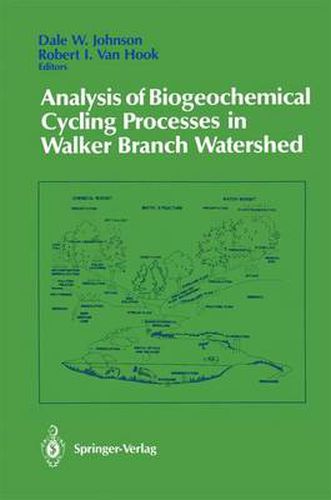Analysis of Biogeochemical Cycling Processes in Walker Branch Watershed

Analysis of Biogeochemical Cycling Processes in Walker Branch Watershed
This title is printed to order. This book may have been self-published. If so, we cannot guarantee the quality of the content. In the main most books will have gone through the editing process however some may not. We therefore suggest that you be aware of this before ordering this book. If in doubt check either the author or publisher’s details as we are unable to accept any returns unless they are faulty. Please contact us if you have any questions.
The Oak Ridge National Laboratory’s Environmental Sciences Division initiated the Walker Branch Watershed Project on the Oak Ridge Reservation in east Tennessee in 1967, with the support of the U. S. Department of Energy’s Office of Health and Environmental Research (DOE/OHER), to quantify land-water interactions in a forested landscape. It was designed to focus on three principal objectives: (1) to develop baseline data on unpolluted ecosystems, (2) to contribute to our knowledge of cycling and loss of chemical elements in natural ecosystems, and (3) to provide the understanding necessary for the construction of mathe matical simulation models for predicting the effects of man’s activities on forested landscapes. In 1969, the International Biological Program’s Eastern Deciduous Forest Biome Project was initiated, and Walker Branch Watershed was chosen as one of several sites for intensive research on nutrient cycling and biological productivity. This work was supported by the National Science Foundation (NSF). Over the next 4 years, intensive process-level research on primary productivity, decomposition, and belowground biological processes was coupled with ongoing DOE-supported work on the characterization of basic geology and hydrological cycles on the watershed. In 1974, the NSF’s RANN Program (Research Applied to National Needs) began work on trace element cycling on Walker Branch Wa tershed because of the extensive data base being developed under both DOE and NSF support.
This item is not currently in-stock. It can be ordered online and is expected to ship in 7-14 days
Our stock data is updated periodically, and availability may change throughout the day for in-demand items. Please call the relevant shop for the most current stock information. Prices are subject to change without notice.
Sign in or become a Readings Member to add this title to a wishlist.


